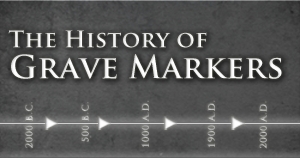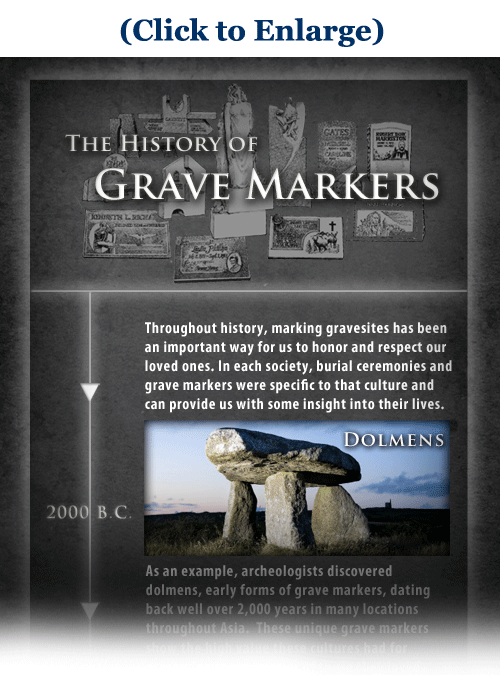 Throughout history, marking gravesites has been an important way for us to honor and respect our loved ones. In each society, burial ceremonies and grave markers were specific to that culture and can provide us with some insight into their lives.
Throughout history, marking gravesites has been an important way for us to honor and respect our loved ones. In each society, burial ceremonies and grave markers were specific to that culture and can provide us with some insight into their lives.
As an example, archeologists discovered dolmens, early forms of grave markers, dating back well over 2,000 years in many locations throughout Asia. These unique grave markers show the high value these cultures had for preserving the memories of those they loved.
Grave markers were obviously an important element in many other ancient societies, as well, especially for the Greeks. They used a wide variety of custom grave markers, everything from round columns to large stone blocks to marble vases, to memorialize the lives and legacies of their loved ones.
It was only around 1,000 years ago in Europe that custom grave markers began to be placed around the local church building, as opposed to around the family home. This shift gradually led to the widespread creation and use of church graveyards for burial grounds.
With the Victorian Age, and the accessibility of skilled masonry, came lavish designs on personalized grave markers. Around this time, people began to use large and ornate structures, various sculptures of cherubs and animals, iron fences surrounding the gravesites, white marble and granite, and more lengthy and individualized inscriptions.
Custom grave markers continue to develop and evolve, such as the now common stone grave markers placed flush with the earth in large, grassy memorial gardens.
Regardless of which personalized grave marker you choose, know that, in doing so, you place yourself within a long and varied human tradition of permanently preserving and remembering the lives of those we love.


